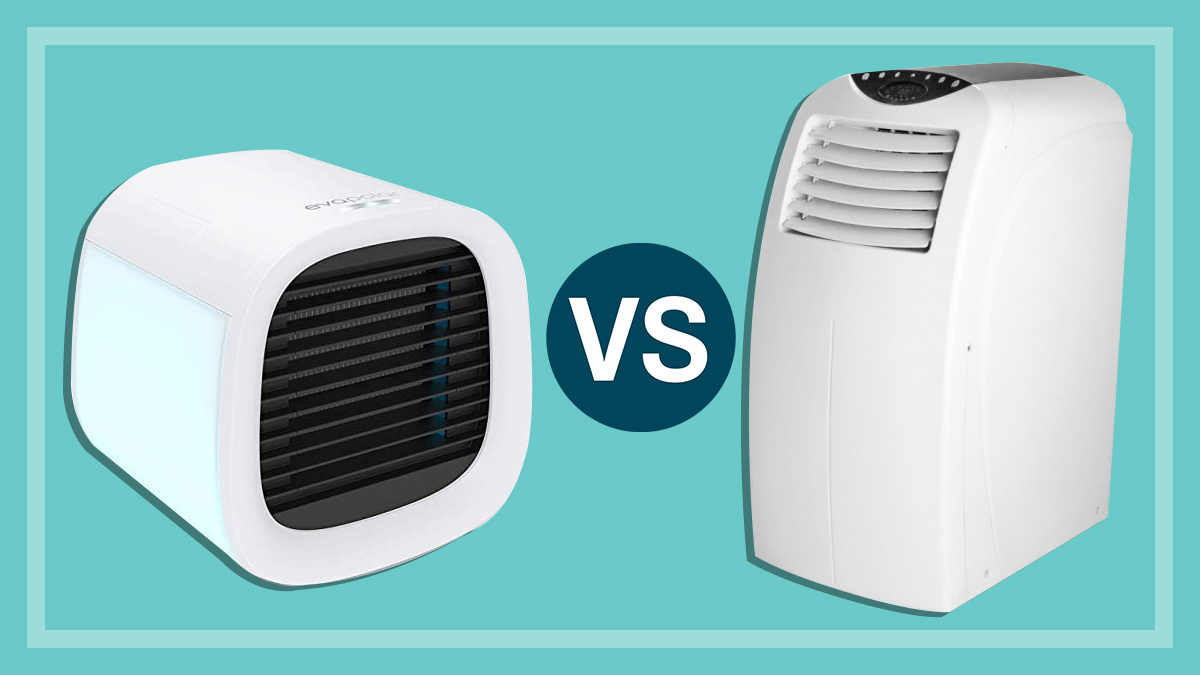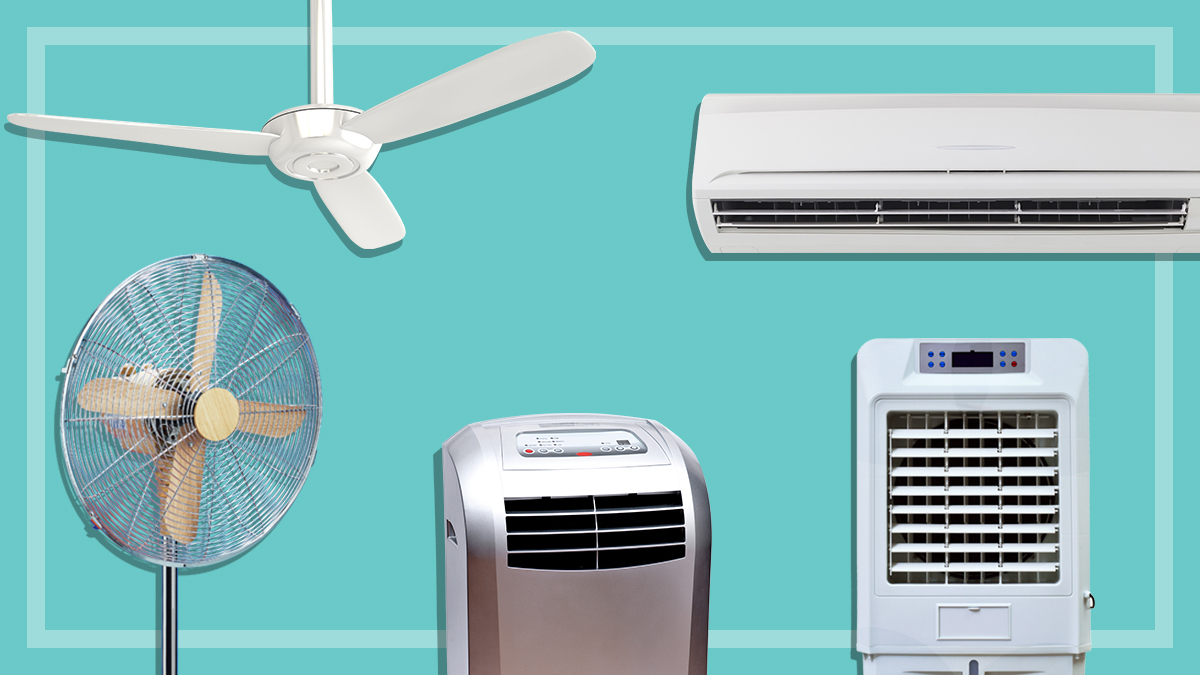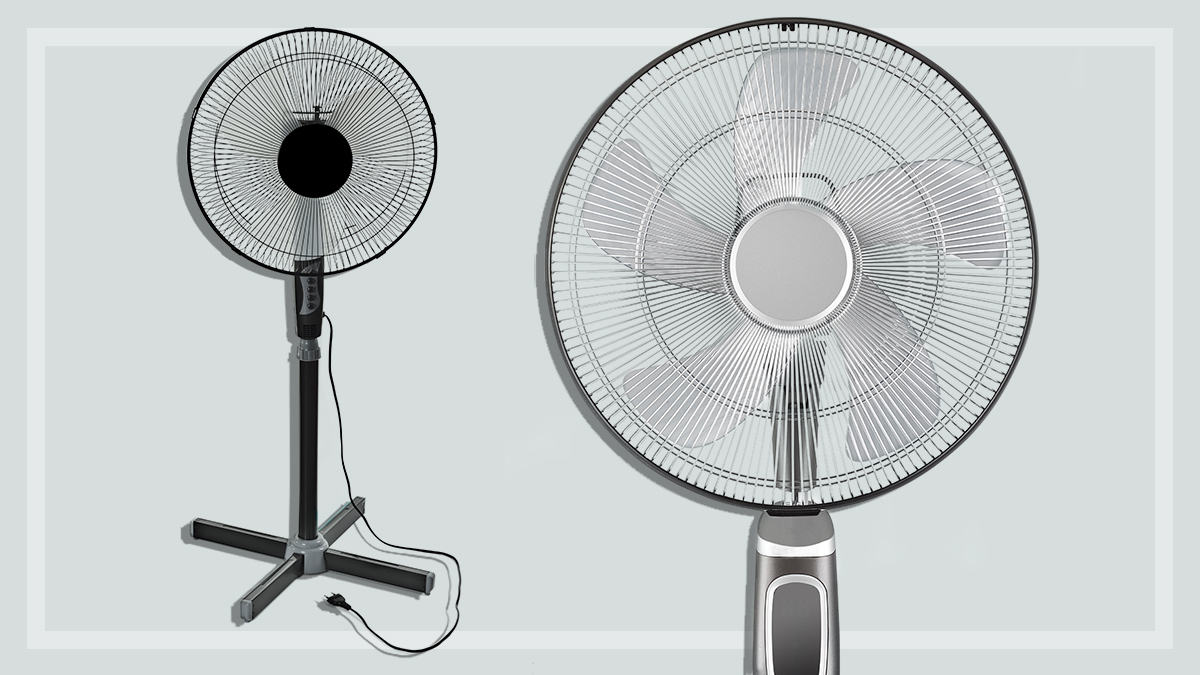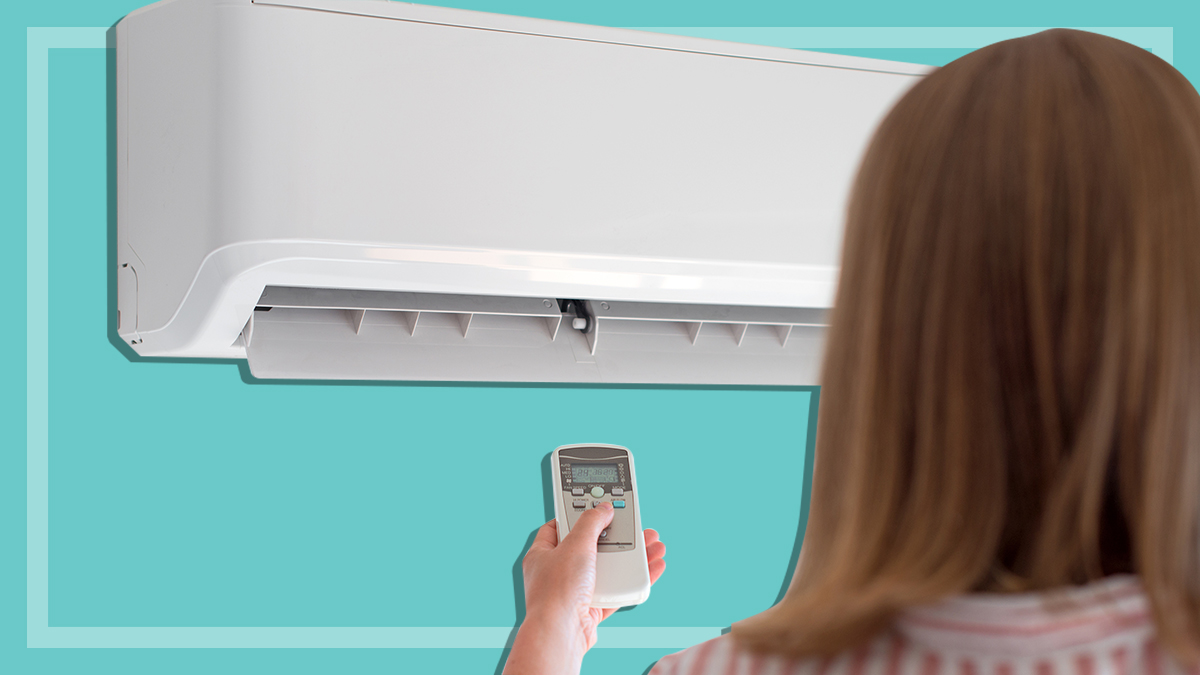Get our independent lab tests, expert reviews and honest advice.
Portable evaporative coolers vs portable heat pump air conditioners

Sick of sweating through those long work-from-home afternoons, but don’t have built-in air conditioning? A portable air conditioner could be just the breath of fresh air you need.
On this page:
- What are portable evaporative coolers and how do they work?
- Are portable evaporative coolers any good?
- What are portable heat pump air conditioners?
- Are portable heap pump air conditioners any good?
- Pros and cons of portable air conditioners and portable evaporative coolers
Portable air conditioners may not do the job as well as in-built systems, but they’re comparatively cheap, easy to install and simple to use. That’s why they’re popular alternatives for people who are on a budget, in rented accommodation, or who just want to cool a single room or small workspace.
There are two basic types of portable air con: evaporative coolers and heat pump air conditioners. We take you through how they work, what they cost, and the pros and cons of each – so you can keep a cool head and decide which is right for you.
What are portable evaporative coolers and how do they work?
Portable evaporative coolers are compact units on wheels that can be moved from room to room, or even outside onto a deck, as long as there’s a power supply. Unlike built-in systems, portable units are designed to cool a room or a person rather than a whole house.
They work the same way as built-in units. An internal fan draws warm, outside air into the unit. Inside the unit are wet filter pads and, as the warm air passes over them, their water evaporates. This creates cooled, humidified air that’s then blown into your room.
As with built-in systems, you need to keep a window open when you’re using a portable evaporative cooler indoors so that condensation doesn’t build up.
How much do they cost to buy and run?
Portable evaporative coolers are relatively inexpensive, ranging from less than $100 up to $600.
They are very cheap to run, costing about three to seven cents an hour for electricity, plus less than one cent an hour for the water used by the device. Portable units have to be topped up with water at a rate of about one to four litres an hour, so make sure you have an adequate water supply.
How much energy do they use?
Energy usage will depend on the size of the unit and the area you’re trying to cool.
To get a rough idea of what size unit you need, take the volume (floor width x floor length x ceiling height) of the room to be cooled, and divide it by two – this gives you a final cubic metre output. Choose an evaporative cooler to suit a room of that cubic metre output.
Are portable evaporative coolers any good?
Yes and no. Their low purchase price, ease of installation and low running costs make them an appealing option, particularly to renters, people on a budget, or people looking to cool a small room.
But they’re not particularly efficient, especially if they’re undersized. They also need to be placed in front of an open window to exhaust air, and keeping a window open might not be ideal on a hot and windy day.
They don’t command a huge part of the market in Australia, which is why we don’t test them. Our portable air conditioner reviews compare only portable heat pump air conditioners.
Maintenance
Portable evaporative coolers benefit from yearly checks and maintenance, most of which you can do yourself.
Disconnect the unit from the power and remove the cover and filter pads. Clean the filters with soap and water. (Depending on water quality and local weather conditions, you should replace these pads every one to seven years.)
Empty the exhaust pipe and water tank, and clear out any sludge. Clean the tank with water and vinegar, then rinse with fresh water. Let internal parts such as the pipe and filter pads dry out completely before putting them back into the unit. Check the exhaust pipe doesn’t have holes and replace it if it does.
Finally, fill the unit up with water, and it’s ready to use again.
What are portable heat pump air conditioners?
Portable heat pump air conditioners (more commonly referred to as ‘portable air conditioners’) are compact units whose parts are housed in a single indoors system – unlike split system air conditioners, where the compressor is located outside the house.
The unit is on casters for mobility and most models come with a large-diameter (about 150mm) flexible duct to exhaust air outside, usually through a window. An adjustable window adaptor, often included with the unit, lets you seal the outdoor end into most windows with minimal air leakage.
Despite their compact size, the venting duct and weight (up to 40kg)… can make them less portable than their name suggests
There are contemporary units that don’t need a pipe or window kit – you just plug them in and go. But these are not room coolers, only spot coolers (i.e. for a single person).
Despite their compact size, the venting duct and weight (up to 40kg) of commonly available models can make them less portable than their name suggests! But they don’t require any wiring, plumbing or structural changes to the building – just a power point. This makes them a suitable option for rental accommodation or temporary use.
As long as you have all the right parts and your window is the right size, installing a portable air conditioner is straightforward – you won’t need much more than a screwdriver.
How do portable heat pump air conditioners work?
They work the same way as built-in air con: they suck warm air from outside, cooling and dehumidifying it with refrigerant, before blowing it into the room.
Models that come with a window kit need to have the flexible duct placed into a window to vent heat from the room. The downside is that when hot air is exhausted through the duct, the change in air pressure can cause warm air to be drawn in from other rooms to replace it. As a result, this style of portable air con is always struggling to maintain a low temperature.
How much do they cost to buy and run?
Portable air conditioners can cost anything between $349 and $1395. They draw less than one kW and running costs are between 35 cents and 65 cents an hour.
Are portable heap pump air conditioners any good?
For those on a budget or in rental accommodation, a portable heat pump air con is a good option because of their relatively low purchase price and installation costs, and their portability. That said, many older models aren’t an energy-efficient choice.
How much energy do they use?
Portable air conditioners have historically been inefficient and weren’t required to carry an Energy Rating Label.
But since April 2020, new portable units must meet minimum energy performance standards (MEPS) and display an energy star rating label. Look for information on energy efficiency according to your location (the labels cater to hot, average and cold zones) as well as how noisy the system is and its kWh usage.
Don’t be surprised if you find the unit has no energy stars: by their very nature, many portable heat pump air cons aren’t all that energy-efficient at cooling down a large space, and are best for cooling a person rather than a whole room.
How much maintenance do they need?
Air filters should be cleaned regularly, ideally every two weeks.
Make sure any ducting is free of air leaks and replace if there are holes. Service all air conditioners and replace parts according to the manufacturer’s instructions.
Pros and cons of portable air conditioners and portable evaporative coolers
Pros and cons
Price
Portable evaporative cooler: $90 to $600
Portable air conditioner: $349 to $1395
Estimated running costs
Portable evaporative cooler: Less than 10c per hour
Portable air conditioner: Roughly $0.35 – $0.65 per hour
Installation costs or issues
Portable evaporative cooler: Easy to install yourself
Portable air conditioner: Easy to install yourself
Climate types suited for
Portable evaporative cooler: Dry climates – won’t work in humidity
Portable air conditioner: All
Energy efficiency
Portable evaporative cooler: Inefficient form of cooling: for every 1kW of energy they use, they put out only the same amount of power (in the form of cool air) or even less.
Portable air conditioner: Traditionally relatively inefficient systems.
Other pros
Portable evaporative cooler: Effective at cooling down small rooms – Portable, which is suitable for rental accommodation. Cheap. Can install yourself. Easy to clean.
Portable air conditioner: Effective at cooling down small rooms. Portable, although ducted models are not necessarily easy to move which is suitable for rental accommodation. Cheap. Can install yourself.
Other cons
Portable evaporative cooler: Don’t work in humid conditions. Need to have windows open to prevent condensation build-up indoors. Inefficient.
Portable air conditioner: Noisy, because the compressor is inside the room with the unit. Inefficient compared to split-systems and built-in ACs (although still more efficient than evaporative).





